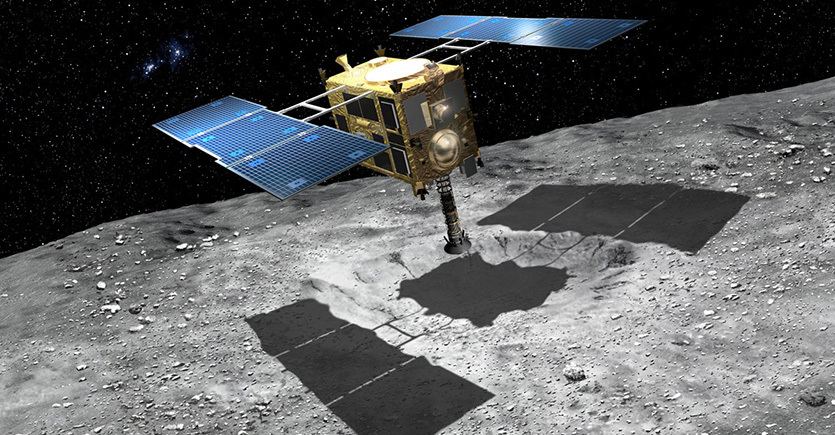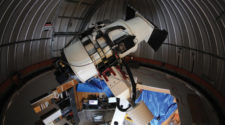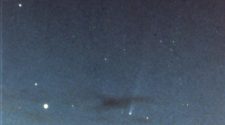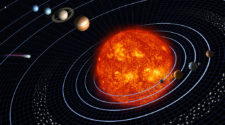MAY 3, 1998: Solar scientist Shane Stezelberger discovers a bright comet traversing the northern field of view of the LASCO C3 coronagraph aboard the SOlar and Heliospheric Observatory (SOHO) spacecraft. Comet SOHO C/1998 J1, which passed through perihelion five days later at a heliocentric distance of 0.153 AU and then became a naked-eye object visible from the southern hemisphere, is the brightest of the “non-group” comets discovered via the LASCO coronagraphs.
MAY 4, 2020: Comet PANSTARRS C/2017 T2 will pass through perihelion at a heliocentric distance of 1.615 AU. This comet is currently visible in the northern hemisphere’s evening sky and is bright enough to be detected with binoculars, and is a previous “Comet of the Week.”
MAY 4, 2020: The Amor-type asteroid (85184) 1991 JG1 will pass 0.150 AU from Earth. It is currently near opposition and close to its expected peak brightness of 15th magnitude.
MAY 5, 2020: The Eta Aquarid meteor shower, associated with Comet 1P/Halley, is predicted to be at its peak. The shower, best viewed from the southern hemisphere, can produce a peak rate of 35 to 50 meteors per hour. A bright waxing gibbous moon (Full on the 7th) may interfere with viewing the shower this year.
MAY 6, 2004: Michael Brown and his team obtain their discovery images of the “dwarf planet” now known as (136108) Haumea, although they did not notice it until 7½ months later. Haumea and other “dwarf planets” in the Kuiper Belt are discussed in a future “Special Topics” presentation.
MAY 6, 2134: Comet 1P/Halley is predicted to pass just 0.096 AU from Earth, the fourth-closest approach it has made to our planet in history, and the closest approach since A.D. 837. At the time of its closest approach it will be located in southern circumpolar skies and perhaps as bright as magnitude -2. Past and future returns of Comet Halley are discussed in a previous “Special Topics” presentation.

MAY 9, 2003: JAXA’s Hayabusa mission is launched from the Uchinoura Space Center on the island of Kyushu, Japan. Hayabusa traveled to the near-Earth asteroid (25143) Itokawa and successfully collected a few soil samples, but contact was lost thereafter. Contact was re-established over a year later and Hayabusa successfully delivered its samples to Earth in June 2010. Hayabusa, along with other spacecraft missions, will be discussed in more detail in a future “Special Topics” presentation.
MAY 9, 2018: Comet PANSTARRS C/2016 R2 passes through perihelion at a heliocentric distance of 2.602 AU. This is an example of the rare carbon monoxide-rich comets, which are discussed in a future “Comet of the Week” presentation on Comet Humason 1961e.
More from Week 19:
Comet of the Week Special Topic Free PDF Download Glossary
Ice and Stone 2020 Home Page


